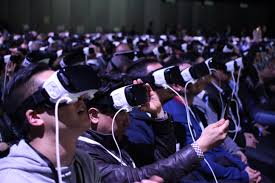Due to the fast development of technology, environments surrounding us are changing tremendously. The major difference technology has made is in education. Applying virtual reality to the field of education has pros and cons. It would be great to have a life-like experience and have the opportunity to engage in a new way of learning.
The virtual world can help students learn in a better environment. They can free themselves from the traditional brick walls and blackboards to learn in the comfort of their own homes. These physical locations can be restrictive for some students who have personal obligations that prevent them from attending class. Due to this, online classes offer students the opportunity to exercise their right to receive an education. Additionally, online classes provide help in real-time, and accessible peers provide the opportunity to socialize and communicate just as if they were on campus. This can help students who have difficulties socializing in the real world. Since it is online, shy students who prefer anonymity can communicate better. Also, educators say that students are more enthusiastic about online classes than face to face classes. These positive attributes can reduce depression and isolation among students.
Another benefit of the virtual reality is the avatar. This seemingly life-like experience may give learners the impression that they are in a face-to-face setting, thus enhancing their ability to work as a group. This is because the avatar allows individuals to disguise the negative factors of their lives and create a favorable facade. The appearance of the avatar helps people socialize more easily.
Even though it seems like there are only positive aspects of virtual learning, there are downsides as well. One major issue with virtual interaction is the insecurity of some of its users. The virtual world is open for anyone to use and leave comments. However, the anonymity can distract from the good the virtual world provides. Freedom to roam and the relative anonymity of a second life can encourage individuals to express themselves in undesirable ways. Strangers who are not invited to the class can join in and disrupt or distract students who are trying to study. To prevent these interruptions, educators must regulate the class and keep it open to only the students enrolled in the class. Strangers seeking to interrupt a class can familiarize themselves with a class schedule and take advantage of opportunities to cause disruptions.
The virtual world, an interface that has been referred to as the second life is also beneficial for people who seek to learn a foreign language. This life-like experience can provide language learners diverse opportunities and valuable interaction with native speakers. While it’s still at a starting level, with time and energy invested, the virtual world will be able to provide benefits to people around the world. Through virtual world technology, both the learner and the educator will see benefits. The virtual world is an astonishing place — where ease of availability has the potential to connect the entire world.
@TheChrony



itunes contact number • May 31, 2018 at 5:10 am
thanks